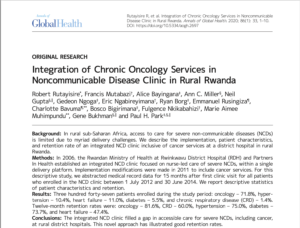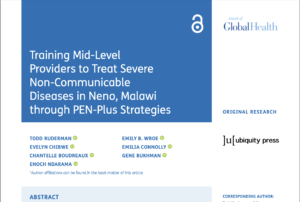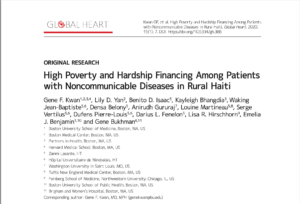Emmanuel K Rusingiza, Ziad El-Khatib, Bethany Hedt-Gauthier, Gedeon Ngoga, Symaque Dusabeyezu, Neo Tapela, Cadet Mutumbira, Francis Mutabazi,2 Emmanuel Harelimana, Joseph Mucumbitsi, Gene F Kwan, Gene Bukhman

In sub-Saharan Africa, continued clinical follow-up, after cardiac surgery, is only available at urban referral centres. We implemented a decentralised, integrated care model to provide longitudinal care for patients with advanced rheumatic heart disease (RHD) at district hospitals in rural Rwanda before and after heart surgery.
Patients were followed for a median of 3 years (range 0.2–7.9) during which 7.4% of them died; all deaths were patients who had undergone bioprosthetic valve replacement. For patients with mechanical valves, anticoagulation was checked at 96% of visits. There were no known bleeding or thrombotic events requiring hospitalisation.
Outcomes of postoperative patients with RHD tracked in rural Rwanda health facilities were generally good. With appropriate training and supervision, it is feasible to safely decentralise follow-up of patients with RHD to nurse-led specialised NCD clinics after cardiac surgery.








